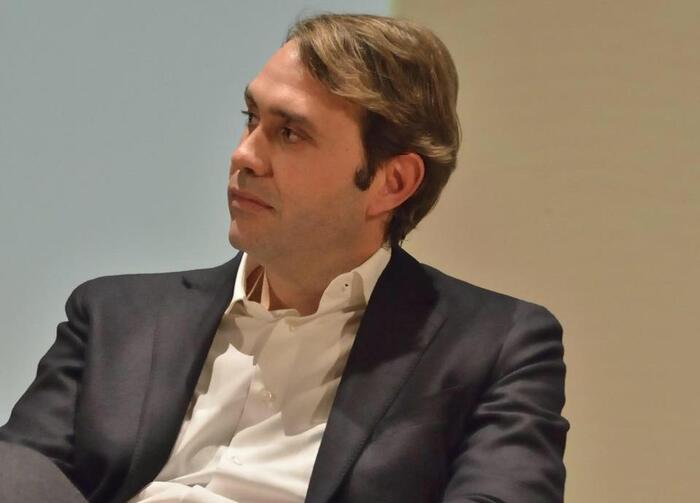Schongau - On September 15, 1935, the Nuremberg Race Laws were enacted, which were the preliminary stage for the murder of around six million Jews.
86 years later, exactly to the day, the Jewish couple Kugler and their sons were remembered in Schongau with the laying of four stumbling blocks in front of the house at Marienplatz 12, where the family's clothing store was then.
At the request of City Councilor Bettina Buresch (Greens), the committee unanimously decided to move the stumbling blocks of the artist Gunter Demnig at the beginning of 2020.
A date for the relocation was already set, but Corona intervened.
Last Wednesday, the ceremonial unveiling of the four stones set into the ground took place at Marienplatz.
The great-grandson of the Schongau couple Moritz and Rosa Kugler, Michel Kugler, had come from Toulouse especially for this appointment.
Together with Mayor Falk Sluyterman, he was visibly moved and unveiled the work of art in front of the Schrimpf houses.
The four stones stand for the couple, who were deported to Theresienstadt in 1942 and died there that same year, as well as for their two sons Norbert and Joseph.
+
Four simple stones in front of the Schrimpf houses remind of the fate of the Kugler family.
© Neumann
“A person is forgotten when their name is forgotten,” quoted Mayor Falk Sluyterman when revealing the stumbling blocks from the Talmud.
The four stones that are now on Schongauer Marienplatz stand to ensure that this does not happen.
The culture of remembrance of the Jewish family, who once had a clothing store there, was given a whole new quality thanks to the stumbling blocks, according to Sluyterman.
“They are where people go by every day.” They are also intended to remind the youth of the suffering and the arbitrary murder and to keep them vigilant, said the mayor.
Former Mayor and District Administrator Luitpold Braun went into more detail about the history of the family members.
It was he who wrote an article in Welf 2019 about the fate of the only Jewish family in Schongau during the Nazi era.
At the beginning of the 20th century, Moritz Kugler, who came from Deutschkreutz in Burgenland, moved to Lechstadt, where he married his second wife, Rosa from Gunzenhausen.
The sons Norbert and Joseph were born in 1906 and 1911 respectively.
Schongau had around 2,500 inhabitants at that time.
The two witnesses of Moritz and Rosa Kugler's wedding celebrated in 1905 could also point out that the family was in the middle of urban society, Braun explained: two members of the city council, also at Marienplatz, testified to the marriage.
+
Former Landrat Luitpold Braun explained the history of the Jewish Kugler family to the guests at the unveiling of the stones on Wednesday.
© Neumann
After the Nazis came to power, the Kuglers' business was Aryanized, and Moritz and Rosa were forced to come to Munich in November 1935.
On June 6, 1942, they had to go to Theresienstadt, where they died just a few months later, at the end of July and in August.
Rosa allegedly from pneumonia, Moritz allegedly from old age.
At the time their parents were deported to Munich, Joseph and Norbert, both textile merchants, had already fled Schongau to Strasbourg.
The German campaign in the west allowed both of them to join the resistance.
Norbert finally died in East Berlin in 1982.
His brother Joseph was killed in a car accident in France in 1948, as Braun was able to find out with the help of grandson Michel.
Around 75,000 so-called stumbling blocks based on the concept of the artist Gunter Demnig can now be found in Germany and 23 other countries.
Four of them are now in the heart of the Lechstadt.














